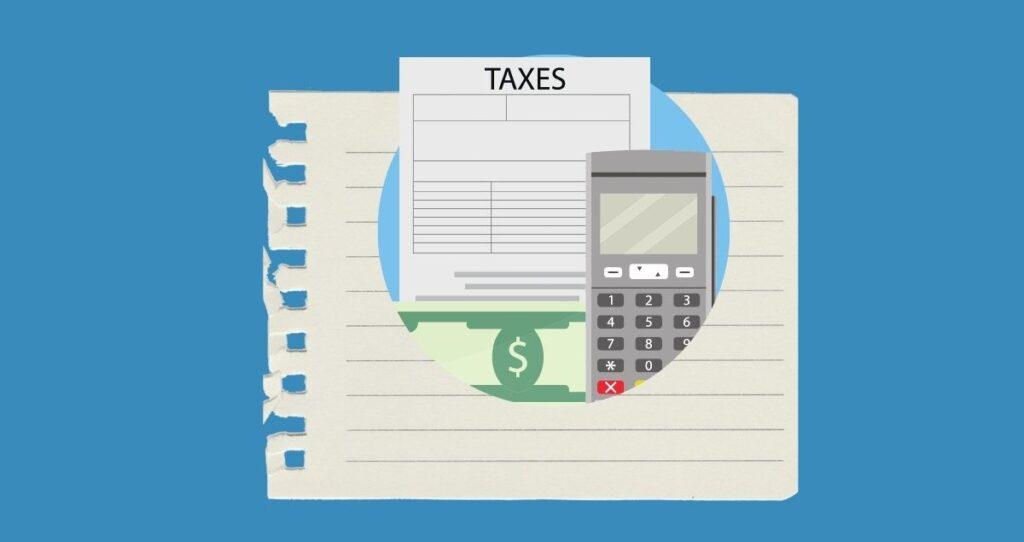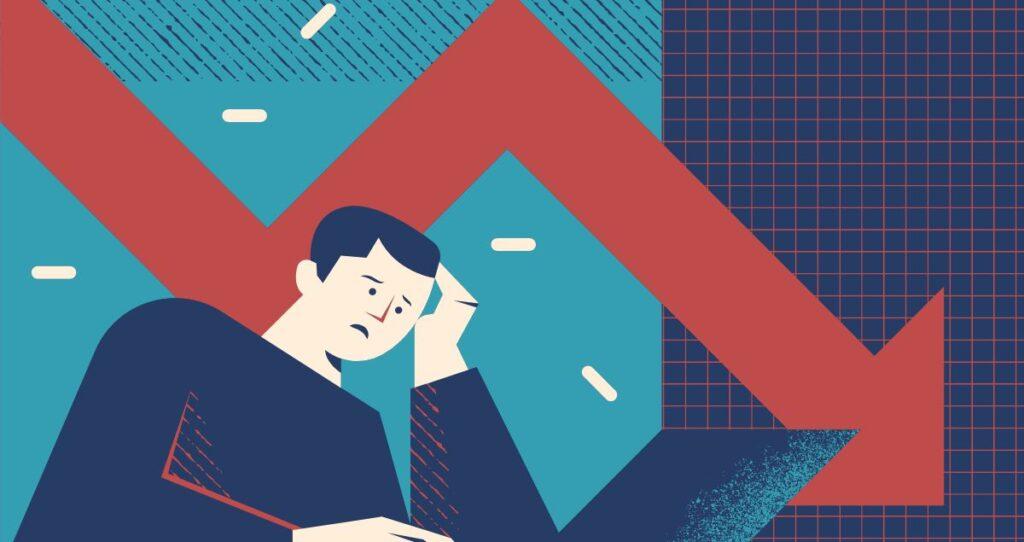When you buy a bond, you lend money to the institution issuing it in return for an interest payment until maturity. Similarly to traditional lending, where you pay back the principal amount with interest to the lender, holding a bond works the same way. The only difference is that the company becomes the borrower while you become the lender. Buying bonds is simple, but the steps you take to buy them will differ depending on the type of bond you want.
You can buy government bonds through the TreasuryDirect website, while corporate and Municipal bonds can be purchased from a broker, a bond trader, or a bank. In this article, I will walk you through 4 simple steps to buy bonds and where to buy each type. I will also cover tips on buying bonds and what to look for, especially if you are new to bond investing.
Key takeaways
- A bond is a fixed-income security in which you lend money to an institution or a government in exchange for interest for a given time.
- Common types of bonds include government bonds, corporate bonds, Municipal bonds, convertible bonds, agency bonds, and callable bonds.
- You can easily buy individual bonds from an online broker, but an easier way to buy bonds is to buy an ETF or mutual fund specializing in bonds.
- You can buy government bonds directly from the TreasuryDirect website. All you need to do is create an account, transfer money into the account by linking a savings or checking account, and then buy bonds of your choice.
- Similar to equities, corporate and municipal bonds can be purchased from a brokerage account, a bank, or a bond broker.
Types of bonds to buy
If you are new to bond investing, you might need to know that there are different types of bonds you can buy. However, the most common and popular types of bonds include government, Municipal, and corporate. You can also buy ETFs and Mutual funds that specialize in bond investing.
Here is how these types of bonds differ and what to expect if you buy them.
- Government bonds: Government bonds are issued by governments, such as the U.S. government, to support public spending and keep the country moving. The U.S. government bonds are issued through the Treasury and are the safest on the market, as the government backs them. The downside of government bonds is that they have a much lower interest rate than corporate bonds.
- Corporate bonds: Corporations issue corporate bonds to raise money for expansion, research, and other business functions. Since companies can easily default on their loans, corporate bonds usually pay a much higher interest than government bonds.
- Municipal bonds: Also known as Munis, municipal bonds are issued by municipalities (local government, cities, and towns) to help maintain capital projects such as building schools and highways, public parks, etc. Munis usually have a much lower interest rate than corporate and government bonds. The upside of buying Municipal bonds is that you don’t pay tax on your earnings.
- Callable bonds: These are bonds that their issuers can repurchase before maturity.
- Convertible bonds: Convertible bonds are corporate bonds that earn interest and allow you to convert them into stocks.
- Agency bonds: These are issued by government agencies instead of the Treasury.
Where to buy bonds?
TreasuryDirect. If you want to buy government bonds without brokerage fees, you can do so from the TreasuryDirect website. This is a website set up by the government for investors like you to buy bonds directly from the government without using a broker or paying broker fees.
Bond funds. If you want to diversify your bond selection, buy a bond fund, a collection of funds managed by a professional fund manager. You can purchase bond funds at a brokerage firm.
Brokerage account. You can buy and sell bonds through a brokerage account. When you buy bonds from a broker, you buy them directly from individuals looking to sell similarly to stocks.
Bond exchange-traded funds(ETFs). You can buy shares of bond ETFs to diversify your portfolio. Instead of buying individual bonds that are riskier, a bond ETF is well-diversified and, therefore, carries less risk. The ETF buys bonds from different types, such as government bonds, corporate, and municipal bonds, and manages them. By Owning the ETFs, you own a small percentage of each bond in the fund, which offers immediate diversification.
How do you buy Government Bonds?
You can buy Treasury bonds from the TreasuryDirect website. Here are the steps to purchase government bonds.
- Go to the TreasuryDirect website.
- Open a TreasuryDicrect account. Choose the type of account, enter personal information, and create a password. Once the account is open, move to the following steps.
- Fund the account by transferring money from your checking/savings account to your TreasuryDirect account. Once the money is in the account, proceed to the following steps.
- Choose BuyDirect
- Decide which type of government bonds to buy. There are two types to choose from: EE bonds and I bonds.
- Click Submit button
- Complete the rest of the information
- You need an amount between $25 to $10,000 to buy bonds.
How do you buy corporate bonds?
There are many ways to buy corporate bonds, but common ones include buying them from the primary market through a broker, a bond trader, or a bank. Simply put, the process of buying bonds is similar to buying equities.
To buy corporate bonds, follow the steps illustrated below.
Step 1. Set up a brokerage account
The first step to buying corporate bonds is to set up a brokerage account. If the name brokerage sounds intimidating, a brokerage account is an investment account that allows you to buy and sell various investments such as bonds, stocks, mutual funds, ETFs, Index funds, etc.
You can open a brokerage account from a bank, an online broker such as Fidelity or Charles Schwab, a broker to buy corporate bonds, or a bond trader. Setting up a brokerage account is easy, and I put together a step-by-step guide to setting up your first one. Once you have the brokerage account, move to the next step.
Step 2. Fund your brokerage account
To buy bonds, you need money. Since the bonds will be purchased inside your brokerage account, you must link and transfer money into your brokerage account. Most institutions allow you to transfer money electronically from a savings or checking account into your brokerage account. The money usually takes a few business days to settle in the account before you can use it to buy bonds.
In the meantime, you can quickly research what types of corporate bonds you want to buy to ensure your picks match your investment goals. Once you have the money in the account, move to the 3rd step to buying corporate bonds.
Step 3. Decide which bond to buy
This is where things get complicated for some people. Knowing which bonds are best for your portfolio might be challenging like individual stocks. But, I found that the best way to know which bond to buy is to rely on a few things I listed below. You must research and compare different bonds from different companies to pick the right one for your portfolio.
Instead of buying an individual bond, you can look into bond funds. These are similar to mutual funds and ETFs, except that they invest in bonds instead of equities. Bond funds are already diversified, which minimizes your risk, especially when you are new to bond investing.
Here are a few factors to consider when deciding which bond to buy.
Your financial goals
Any investment decisions should match your financial goals, regardless of their type. Always refer to your financial goals when choosing to invest in bonds. For example, if you want the money in less than a year to purchase a home, you must invest in short-term funds.
Investment horizon
Bonds have different maturity dates, and knowing how long you want to hold a bond is critical to picking the right one.
Risk tolerance
Every investment comes with the risk of losing your money. For example, buying a bond with a lower coupon rate might not keep up with inflation as your earnings lose purchasing power faster than the inflation rate. On the flip side, if you purchase a bond with a higher interest rate and a lower rating, you will risk losing your money as the institution can easily default on its loans.
Remember, holding bonds means you lend money to the institutions that issued them. If the company goes out of business, your chances of getting your money back will be slim. That is why you need to ensure you understand your risk tolerance. Risky bonds usually pay higher interest rates.
The quality of the bond
A quick note. The safer the bond, the lower the interest rate you get. For example, U.S. government bonds pay a low interest rate simply because the U.S. government backs them. Similarly, high-grade bonds carry lower risks, resulting in lower lower coupon rates. Sticking to high-quality bonds is always the best way to invest in bonds.
In this step, you should list bonds you think are good to buy. However, you are not ready to purchase them yet, as you still need to sift through your list to pick the best bond. To do this, you must take your bond selection process to the next level.
This is where bond rating comes into play. If you are ready, go to the next step and learn how to compare the bonds you listed to keep the best ones.
Compare ratings of bonds on your list.
Similarly to how credit reporting agencies(Equifax, TransUnion, and Experian) establish credit reports and consumers’ creditworthiness, companies are also rated based on their ability to repay their loans. The top three agencies that rate companies’ bond creditworthiness include Moody’s, Standard & Poor’s, and Fitch. These companies rate bonds similarly by assigning letters to each to help you know how good the bond is. The top-rated bonds are AAA for Standard & Poor and Fith, while Moody’s assigns the best bond with Aaa.
Bonds with these investment ratings are always the best to buy as they mean the company has a lower risk of defaulting on its loans and, therefore, can pay you back the principal and interest it promised. As I said earlier, the higher the bond rates, the lower the interest the companies pay you. Do you get better bonds in exchange for a lower interest rate, or do you get bad bonds for the promise of a higher yield? The choice will be yours.
Conversely, speculative bonds have bad ratings, so the chance of losing money is high. In other words, companies whose bonds receive speculative and lower grades have higher chances of defaulting on their loans. Perhaps the riskiest bonds are over-the-counter bonds. Similarly to equities, bonds on OTC markets carry more risk than those traded on conventional bond markets. Not only that, you might need to make arrangements with your broker to purchase OTC market bonds, but the market is also less transparent, unregulated, and less liquid.
Read more: How are bonds rated?
You can use these guidelines to narrow down one or two bonds you want to buy. Next, let’s see how you can purchase your bond.
Step 4. Buy the bond
Now that you have decided which bond to buy, how do you buy it? The following tips will help you select the bond you want to buy inside your brokerage account and place an order. While some brokers have different account settings, most brokerage accounts have options for buying bonds similar to the following.
Here is how to buy a corporate bond step by step.
- Select trade. A new tab will open, allowing you to search for the bond or input the bond if you already know which one you want. You might have options to narrow your searches by maturity dates, types of bonds, etc.
- Select buy. Once you have found your bond, select buy. After selecting buy, you will see a summary of your order. You can change the amount you want to invest. Remember that some bonds require at least $1,000, while others require much less. You will also see the coupon rate, bond term, YTW, APY/YTM, quoted price, coupon rate, and frequency.
- Set up limit orders. Since bond prices fluctuate based on market rates, limit orders are the best way to minimize risk.
- Review your bond. If you are happy with your selections, review your order. This is where you get to double-check everything before placing the order.
- Place your order. If everything looks correct, click and place an order. You might have different options inside your account, but usually, there are a few options where you can place the order or change the order.
How do you buy Municipal bonds?
Municipal bonds are issued by states, cities, government entities, etc, to raise money for infrastructures. When you buy Municipal bonds, the issuer guarantees interest payment and the return on the original investment, known as the principal. Municipal bonds offer lower interest but are popular because you don’t pay tax on your earnings.
Municipal bonds can easily be purchased online through a broker, bank, or bond broker. Some online Robo-Advisors also offer bonds as an option for their portfolio mix for investors. You can follow the steps we discussed when buying corporate bonds to buy municipal bonds. You typically need about $5,000 to buy a municipal bond. Munis can be purchased as individual bonds, bond ETFs, or a mutual fund.
Things to consider when buying bonds
- Coupon rate. This is the annual interest rate your bond issuer will pay you for holding the bond. Ideally, buying bonds with higher coupon rates earns you more returns.
- Maturity date. The maturity date is when the bond issuer will repay you the face value or the total amount you loaned them. Make sure you know how long you want to hold the bond. Are you a short-term investor or a long-term one?
- How well does the bond align with your investment goals? Only buy bonds that align with your investment goals to avoid unnecessary risk and maximize your return on investment.
- Yield. A yield is the total return the bond generates over time. You must earn a meaningful ROI to justify your risk and build wealth.
- Bond rating. Bonds with investment grade(high-grade) are safer.
- The type of bonds. If you want safety, buy government bonds. If you wish to have a higher interest while keeping risk minimal, buy Corporate bonds. On the other hand, stick to Municipal bonds if you don’t want to pay tax on your earnings. You can also buy bond ETFs and mutual funds for maximum diversification.
What are the risks of investing in bonds?
Investing in bonds comes with risks that vary based on bond type. Common dangers of buying bonds include the following.
- Risk of inflation. As inflation goes higher, the purchasing power of your money goes lower. While bonds are some of the best fixed-income assets, the interest you earn on your bonds might not be enough to keep up with inflation.
- Call risk. Sometimes, the companies issuing bonds might want to pay them off prematurely, especially when rates decrease. This can lead to buying more bonds at lower interest unless you invest in other assets with higher returns.
- Default risk. Perhaps the most significant risk of buying bonds is the risk of default. When you buy bonds, you lend money to institutions, guaranteeing they will pay it back with interest. However, if the company defaults on its loan, you risk losing your investments.
- The risk of interest rate. When interest rates go higher, existing bonds lose value, resulting in capital loss if you decide to sell your bonds before maturity.
How to make money with bonds
Typically, there are two ways to make money with bonds: buying and holding until maturity or selling early in increasing market rates.
Buy and hold until maturity strategy. When you buy bonds and hold them until maturity, you collect interest over the bond’s lifetime and receive the principal at maturity.
Selling bonds before maturity. When interest rates decrease, existing bond prices go up. In this case, you can sell your bond for a higher price and pocket the interest you received until you sell.
What types of interest do bonds pay?
A common misconception about bonds is that bonds only pay a fixed interest rate. This is not entirely true. While bonds pay fixed interest rates, there are also other types of interest bonds pay. Here is a list of common interest paid by bonds.
- Fixed interest rate. Most bonds pay a fixed interest, meaning you receive the same payment until maturity.
- Zero-coupon. The term “Zero-coupon” means these bonds don’t pay interest. Instead, you buy them at a discount, and the issuer pays you more than you paid at maturity.
- Convertible interest. When you buy convertible bonds, you get paid interest like regular ones. The only exception is that you can convert them into shares of stock.
- Floating-rate bonds. The interest of floating-rate bonds is based on benchmarks like the bond index, which change periodically.
What bond is good to buy?
Buying bonds can be tricky if you don’t know where to start. Government bonds are safer since the government backs them. The only way to lose your money with government bonds is if the government goes bankrupt, which is unlikely.
On the other hand, corporate bonds are riskier than government bonds as they are only backed by the company’s guarantee to repay. As you know, companies go bankrupt daily. So, how do you know if a corporate bond you want to buy is good?
If you did not know it, bonds have ratings that indicate whether they are good or bad. Similarly to consumer rating, where credit reporting agencies give you a credit score based on how risky it is to lend you money, corporate bonds are also rated by rating institutions to help investors pick the right bonds.
The three largest bond rating agencies evaluate bond issuers’ creditworthiness based on their ability to repay loans. Typically, the best bonds receive a AAA rating from Standard & Poor’s and Fitch, and the same bonds get an Aaa from Moody’s.
If you want to support local government and pay no taxes on your earnings, buy municipal bonds.
Buying ETFs and mutual funds specializing in bonds is another clever way to invest in bonds, as they offer direct diversification of your investment and help you minimize risks.









